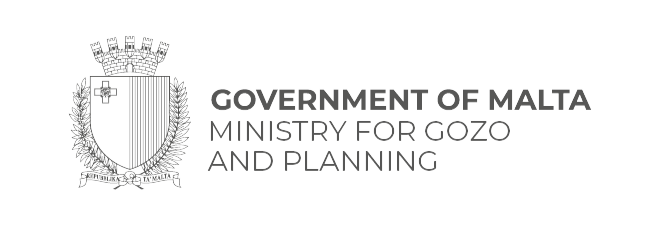Festa season is an amazingly colourful time for tourists to visit Gozo and witness the history, devotion, dedication, sincerity, passion and community spirit of our people as they unite together to celebrate in honour of their patron saints.
It is important to understand the significance of a village festa to Gozitan life and culture. Every village in Gozo has its own patron saint who personifies the virtues of the village, while safeguarding the parish and its people. Villagers idolise their patron saint and each parish church is adorned with statues and paintings dedicated to their saint’s life and times. Every village hosts a religious Festa honouring their saints. Munxar’s Feast of St Paul kicks off Gozo’s festa season in late May and these religious celebrations continue throughout the summer until mid-September with the ‘Feast of our Lady of Graces’ in Victoria.
https://www.instagram.com/p/sZg-RsrVvS/
A festa is a loud and proud affair. The decorations, pageantry and events in a festa give locals a communal sense of belonging and represent many months spent working hard for this one week, whether it is fundraising, event-planning, creating street decorations or rehearsing in local bands. Festa celebrations are a coming together of local villagers and a show of excellence, prosperity and talent within each community. Many Gozitans will return to villages they grew up in to reconnect with friends and family in these joyous celebrations.
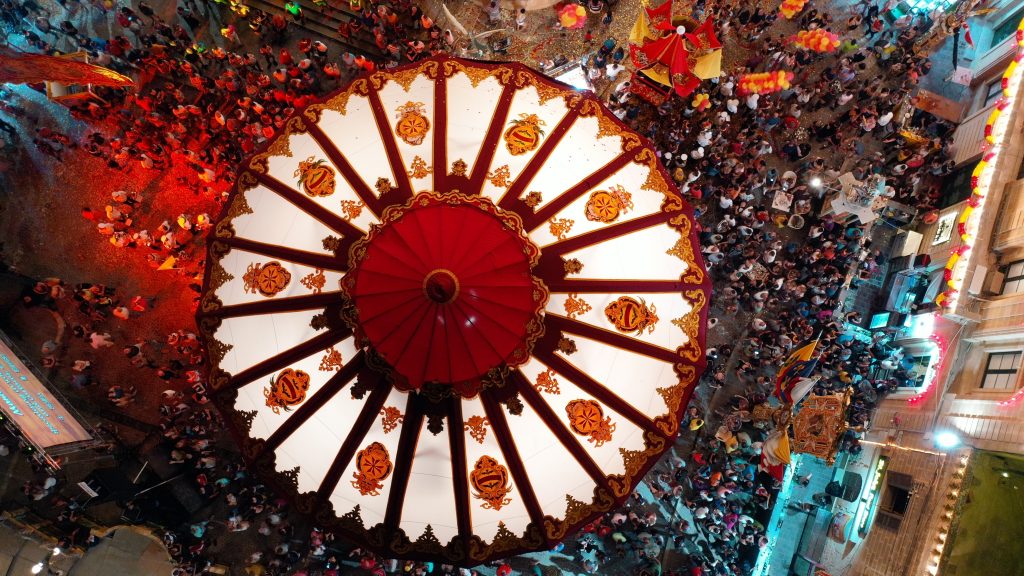
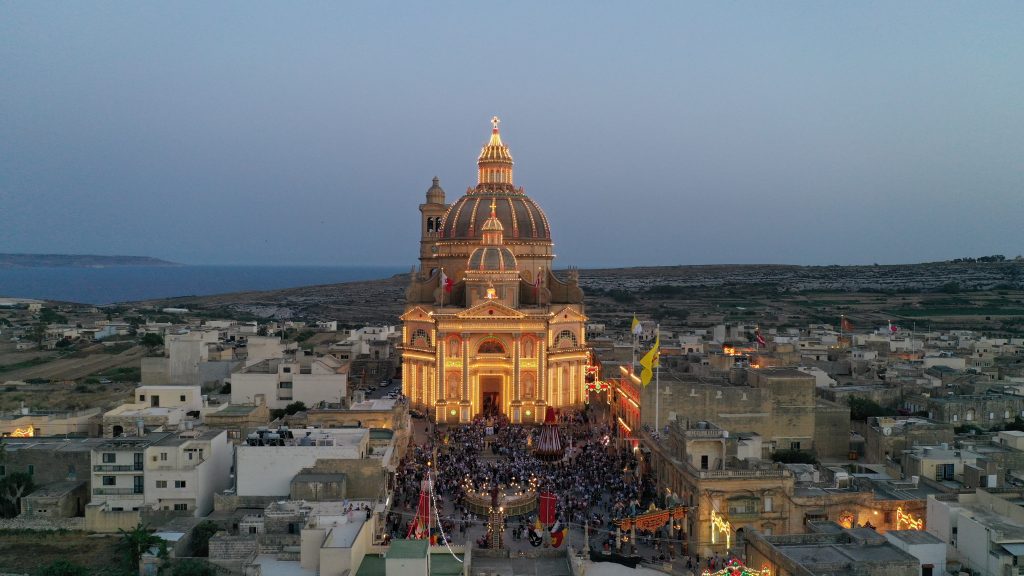
Each village festa event includes lavishly decorated churches and village streets which stage marching band parades, church services and religious processions. These week long events culminate with a pyrotechnic show of colour and cordite featuring ġigġifogu (ground fireworks) and nar tal-ajru – the spectacular aerial firework shows often synchronised to music and watched by hundreds of locals.
https://www.instagram.com/p/BkpNRjIAIhh/
The religious ceremonies that underpin a Festa begin with the ħruġ min-niċċa (where the Saint’s statue is removed from its niche inside the church and paraded inside before being placed on a wooden plinth in a central position). The church, which is always highly decorated for the Festa is visited by parishioners throughout the week who lay fresh flowers and candles by the Saint’s statue as a sign of their devotion.
https://www.instagram.com/p/BYgs8ckB171/
A week later the Saint’s statue is carried outside church by statue bearers (reffiegħa) and paraded through the village streets, then as the statue re-enters the church a last blessing (il-barka) takes place which is always accompanied by a loud applause.
The history around devotion to individual saints goes back to Medieveal times. Throughout the 17th and early 18th century many of Gozo and Malta’s churches were rebuilt and their interiors lavishly decorated in the ornate and extravagant Baroque style of this era. The style of Gozo’s Festas elaborate decorations (armar) are often regarded as ‘High Baroque’.
These highly crafted decorations take years of work and meticulous planning and showcase the talent of artists and village craftspeople who volunteer their services free of charge to cut, sew, build and create their festa village decor.
https://www.instagram.com/p/BzLh4bVnLTS/
Like Manuel Mizzi, a schoolteacher from Qala who has been creating armar for over 10 years. He makes the decorative Bandalori and Pavaljuni festa fabric banners which decorate the streets in Qala.
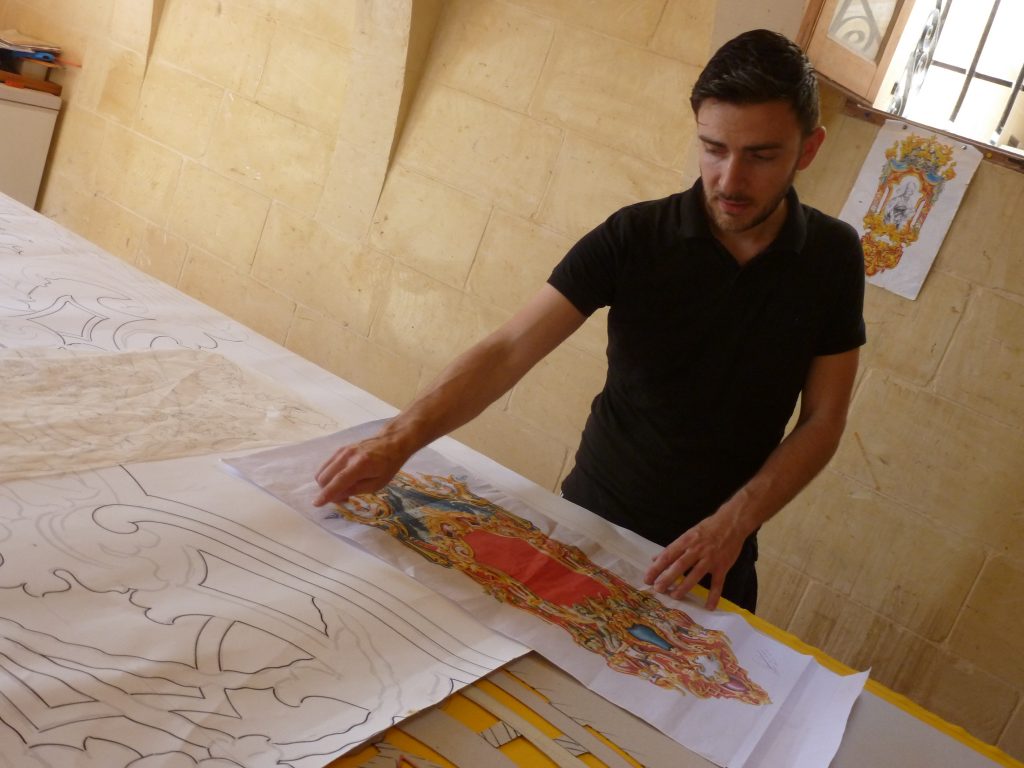
He says: “Making armar like this Bandalora involves an incredible amount of work. Working to our brief, the artist, in this case Joseph Cauchi, gives us an A3 colour copy of his design together with a to scale enlargement of the bandalora. My job is then to translate the design from paper to fabric. Bandalori can be anything from 10 to 25 feet high, so you would have to work on large sections.”
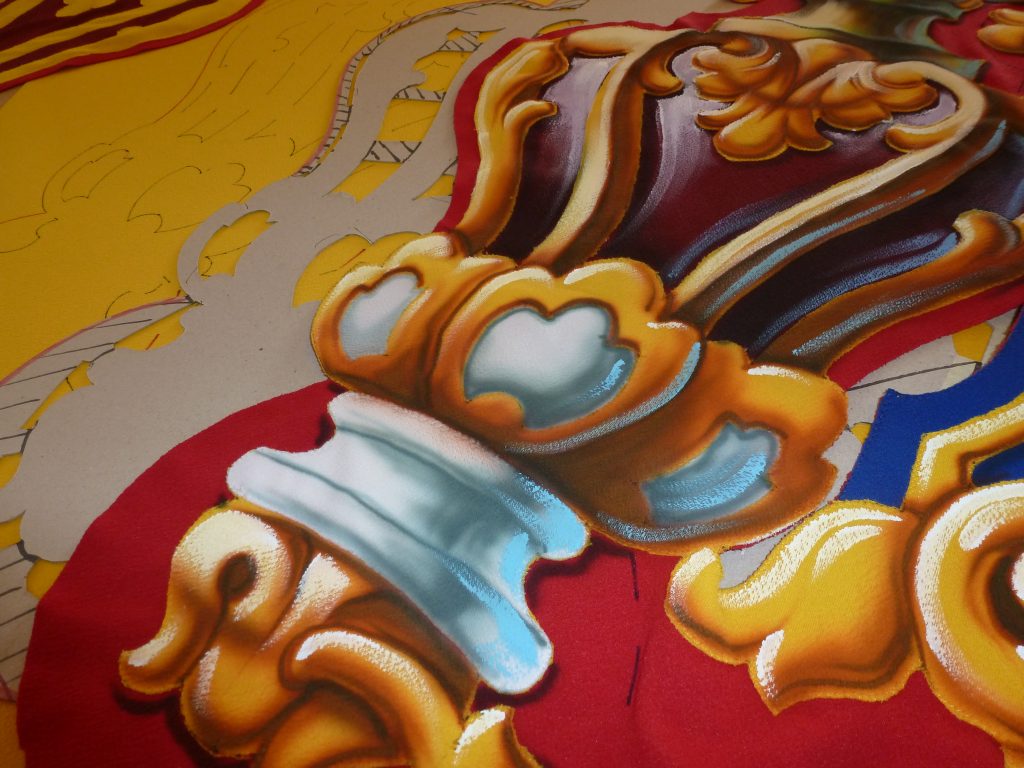
He continues: “I then have to copy his design to scale and create a cardboard stencil so I can indicate the lines our seamstress Cetta will need to sew and this is traced onto the fabric. It’s quite technical, you must understand how the artwork will fit together as not everything within the design is sewn; patches of fabric are tacked and then sewn to fit exactly where the artist needs to paint (sfumar – the process of painting the designs directly onto the fabric while adding shadows and highlights, giving them a 3D effect) directly onto once all the sewing is finished”.
Manuel says: “You need a speedy seamstress who can work with layers of material. Someone like Cetta who is precise, fast and very talented, she goes like crazy on the machine!”

Bandalori are the decorative banners which include painted portraits or scenes and are very intricate, whereas Pavaljuni are the banners used for decoration across the street, incorporating symbols or scenes relevant to the parish.
Qala’s Feast of St Joseph takes place on 4th August and Manuel and seamstress Cetta are currently finishing off a new set of Bandalori banners designed by local artist Joseph Cauchi.
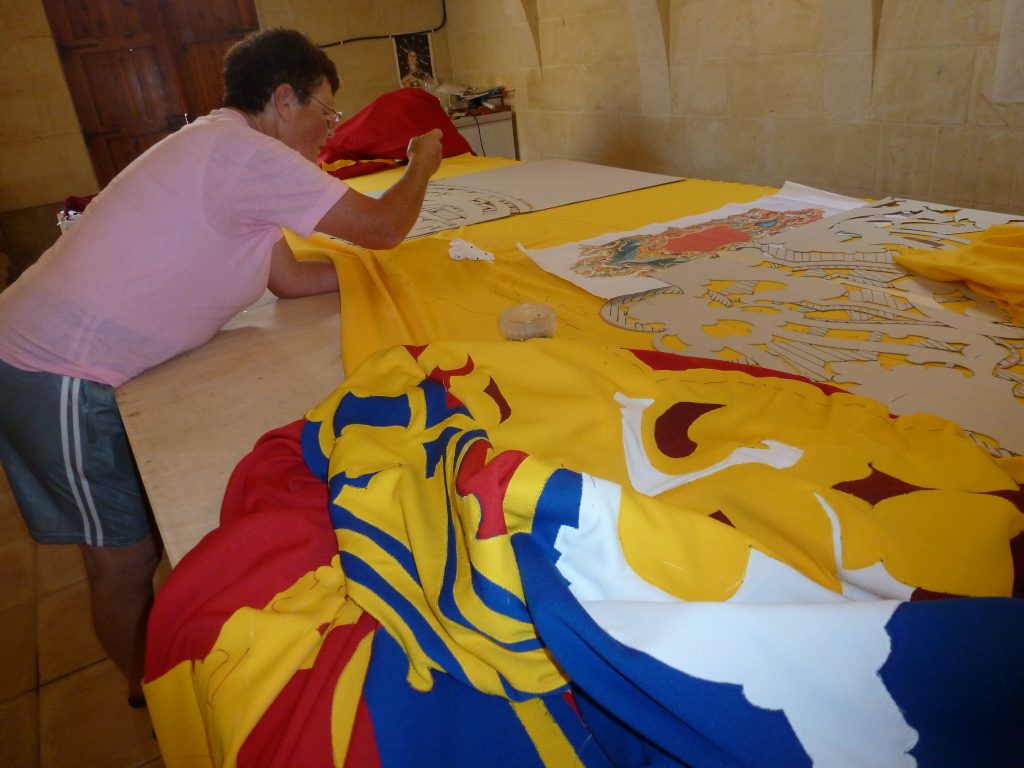
Seamstress Cetta Theuma has been sewing armar decorations since 2004 and says: “It’s a lot of hard work, which you then forget when you see it hanging up and the villagers appreciate it. Last year Manuel and I had to put in a lot of extra hours working until the early hours of the morning to get the work done. One time we were working in this small room and I could hear all the villagers in the square enjoying themselves and I said I think they’ve forgotten about us. As I was sewing, I was visualising that it was already finished and I think the spirit of St Joseph was helping me.”

With the level of work involved in everything from decorations and event planning, each village Festa is unique and there’s always an undercurrent of healthy rivalry between villages as they compete to see who will show the most elaborate street decorations or the most spectacular firework displays.

Band marches are also an important aspect of a Festa and because each village has their own band with their own unique marches (known locally as marċi) it is a time when music continually fills the air. During Festa events these band processions are routinely followed by supporters waving flags or throwing celebratory paper confetti.
So, Festa season really is a time to celebrate, it’s when passions unite and Gozo truly comes alive. What’s more, Gozitan people relish sharing their customs, faith and traditions with newcomers, so that they too can savour the culture, craftmanship and community spirit of this special isle.
With thanks to: Chris Galea, Manuel Mizzi, Cetta Theuma, Vincent Zammit, Godfrey Farrugia and Manuel Xuereb.
READ NEXT: Guide to Gozitan Feasts








